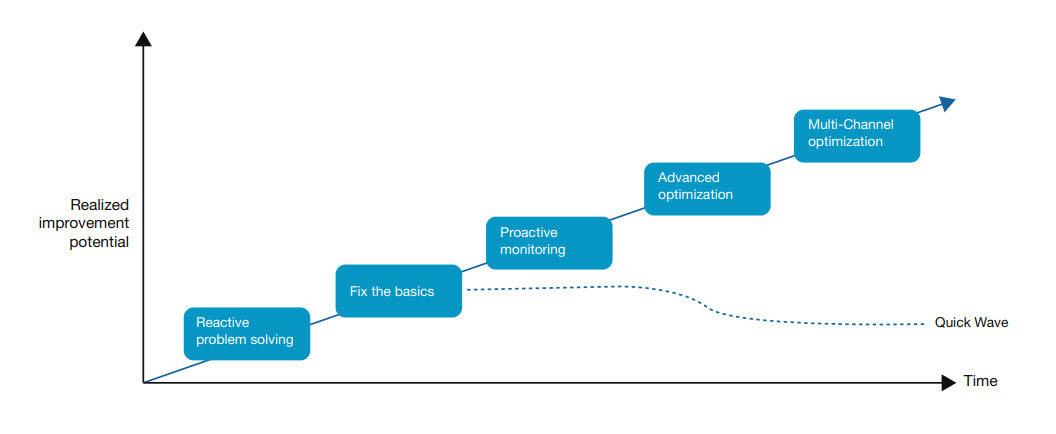
The DXO Growth Model
How it works...
DXO is driven by a process that includes A/B testing, multivariate testing, user research, analytics, and personalization.
- Analyse:
Analysing statistical and qualitative customer data: we uncover problems occurring in any digital channel, looking at customer needs and behaviours, and assessing how these impact buying decisions. The goal of this phase is to identify improvements and attach tangible business value to them. - Improve:
Applying the proposed improvements from the previous step to the digital channels: we focus on function, content, interaction, navigation, and presentation - Validate:
Finally, validating whether the implemented improvements had the desired effect, and continue
the process from step one, ensuring continuous improvement. - Repeat:
Keep working through the growth model until we have full omni-channel optimisation


